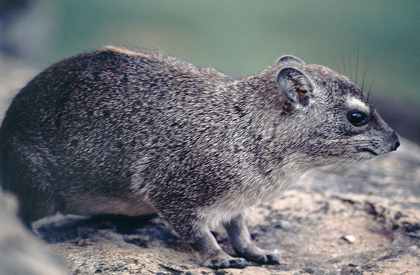
 |
Freethought & Rationalism ArchiveThe archives are read only. |
|
|
#11 |
|
Veteran Member
Join Date: Feb 2003
Location: Seattle, WA
Posts: 1,058
|
Really? Wow that is just cool. I had no idea (obviously).
Guess I need to watch the Discovery channel more to rid myself of my tooth-centric view of poison delivery systems. 
|
|
|
|
|
#12 | |
|
Senior Member
Join Date: Jan 2002
Location: California
Posts: 646
|
Quote:
Actually IIRC certain early-diverging placental mammals also only have cloacas, like the tenrecs of Madagascar. [/annoying nerdiness] Good topic though. |
|
|
|
|
|
#13 | |
|
Contributor
Join Date: Apr 2001
Location: Down South
Posts: 12,879
|
Quote:
|
|
|
|
|
|
#14 | |
|
Contributor
Join Date: Apr 2001
Location: Down South
Posts: 12,879
|
Quote:
|
|
|
|
|
|
#15 | |
|
Contributor
Join Date: Apr 2001
Location: Down South
Posts: 12,879
|
Okay I looked it up, and indeed primitive placental mammals in the Tenrec family (some hedgehogs included) have cloaca for elimination...
 Thank you for the additional information! Thank you for the additional information!Quote:

|
|
|
|
|
|
#16 | |
|
Veteran
Join Date: Aug 2001
Location: Snyder,Texas,USA
Posts: 4,411
|
Quote:

|
|
|
|
|
|
#17 |
|
Veteran Member
Join Date: Oct 2001
Location: Eastern U.S.
Posts: 1,230
|
Are butterflies and moths different kinds? If so, which is this?*
Below is a picture of a Rock Hyrax, Procavia capensis. Adults weigh less than 10 pounds. What kind is it? **  Is the animal in the picture below a snake or a lizard?***  * It's a moth, Pseudopanthera macularia. ** According to its anatomy, morphology, and genetics, its closest living relatives are elephants. *** Trick question -- it's neither. It's an amphisbaena, a reptile that has characteristics of both snakes and lizards, but is not considered to belong to either of these groups. They're sometimes called "Worm Lizards". |
|
|
|
|
#18 |
|
Contributor
Join Date: Apr 2001
Location: Down South
Posts: 12,879
|
Lone Ranger, thanks! I like the Hyrax...are there subspecies or just the one little elephant cousin?
|
|
|
|
|
#19 |
|
Veteran Member
Join Date: Oct 2001
Location: Eastern U.S.
Posts: 1,230
|
LadyShea:
There may be subspecies of Procavia capensis, but it's truly unique as a species. Not only is it the only member of its genus, it's the only member of its entire family (Procaviidae) and even of its entire Order (Hyracoidea). Cheers, Michael |
|
|
|
|
#20 |
|
Contributor
Join Date: Jul 2000
Location: Lebanon, OR, USA
Posts: 16,829
|
That hyrax does not look much like an elephant because their ancestors diverged not long after the K-T mass extinction; fossil elephants start appearing in the Eocene.
Also diverging from hyraxes and elephants at this time are sirenians -- manatees and dugongs, a.k.a. sea cows. There is also some evidence that elephants and sirenians are closer in another way -- that elephants' ancestors had returned to the water for a while, with sirenians staying there. So one can reconstruct this sequence: In the late Cretaceous, Africa/Arabia splits off from the other continents, carrying the ancestors of the "afrotherian" mammals with it. These diverge into the ancestors of aardvarks, golden moles, and elephant shrews -- and the hyrax-elephant-sirenian ancestor, which likely looked much like a present-day hyrax. But not long after the K/T disaster, some early hyrax-like creature starts living in the water. Some of its descendants return to the land, becoming elephants, and some stay in the water, becoming sirenians. |
|
|
| Thread Tools | Search this Thread |
|